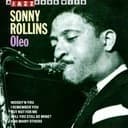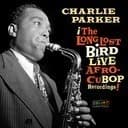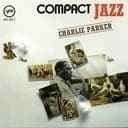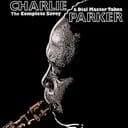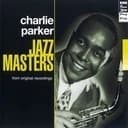Theory and Formula: The Chromatic Passing Tone Structure
The A♯ bebop dominant scale follows the interval formula of 2-2-1-2-2-1-1-1 semitones (whole-whole-half-whole-whole-half-half-half), producing the intervallic structure: root (1), major second (2), major third (3), perfect fourth (4), perfect fifth (5), major sixth (6), minor seventh (♭7), and major seventh (7). In the sharp-based spelling, this creates the notes A♯, B♯ (enharmonically C), C𝄪 (enharmonically D), D♯, E♯ (enharmonically F), F𝄪 (enharmonically G), G♯, and G𝄪 (enharmonically A). The chromatic passing tone—the major seventh (G𝄪)—bridges the gap between the characteristic dominant flat seventh (G♯) and the octave, creating an eight-note bebop scale that allows chord tones to fall consistently on downbeats during eighth-note improvisation.
The theoretical formula remains identical to the B♭ bebop dominant scale, but the notation complexity makes reading and performing this scale extremely impractical. Where B♭ bebop dominant uses straightforward flats (B♭-C-D-E♭-F-G-A♭-A-B♭), the A♯ spelling requires musicians to navigate double sharps and uncommon accidentals like B♯ and E♯. This notational burden explains why jazz musicians, composers, and educators universally adopt the B♭ spelling when working with this dominant bebop scale, despite both versions producing identical pitches and musical functions.
Enharmonic Relationship and Notational Complexity
The A♯ bebop dominant scale represents an extreme example of why enharmonic respelling is essential in practical music notation. Reading notes like B♯ (which sounds like C), C𝄪 (which sounds like D), E♯ (which sounds like F), F𝄪 (which sounds like G), and G𝄪 (which sounds like A) creates unnecessary cognitive load for performers. The B♭ bebop dominant scale eliminates this complexity entirely, using only three flats (B♭, E♭, A♭) plus natural notes—a dramatic simplification that makes reading, learning, and performing exponentially easier.
In jazz notation and real-world improvisation contexts, the B♭ spelling appears in lead sheets, method books, and pedagogical materials because it aligns with how musicians conceptualize this dominant sound. The A♯ bebop dominant exists purely as a theoretical construct, useful for understanding enharmonic relationships and the circle of fifths but impractical for actual performance. Jazz educators teach the B♭ version exclusively, and transcriptions of bebop solos over this dominant sound invariably use flat-based notation, demonstrating the universal preference for notational simplicity in jazz practice.
Application in Jazz Improvisation Over Dominant 7th Chords
Whether spelled as A♯ or B♭, this bebop dominant scale serves as a primary improvisational tool over A♯7 (or B♭7) dominant seventh chords in jazz contexts. The scale excels in ii-V-I progressions where the dominant chord resolves to D♯ major (or its enharmonic equivalent E♭ major), providing smooth voice leading and characteristic bebop chromaticism. In jazz standards and bebop compositions featuring this dominant harmony, the scale creates authentic bebop lines that outline the chord structure (root, major third, perfect fifth, minor seventh) while incorporating melodic chromaticism through the major seventh passing tone.
The eight-note structure ensures chord tones fall on downbeats during eighth-note improvisation, a rhythmic device pioneered by bebop masters like Charlie Parker and Dizzy Gillespie. When soloing over an A♯7 (or B♭7) chord, jazz pianists use this bebop dominant scale to create lines that emphasize chord tones on strong beats while using scale tones and the chromatic passing tone to generate forward motion on weak beats. This technique appears throughout bebop, hard bop, and modern jazz repertoire, making the bebop dominant scale—regardless of spelling—an indispensable tool for dominant chord improvisation.
Piano Practice Techniques and Fingering Considerations
For piano practice, musicians should use the B♭ bebop dominant scale spelling exclusively, as the flat-based notation facilitates proper fingering patterns and technical development. The right hand ascending from B♭ uses the fingering: 2(B♭)-1(C)-2(D)-3(E♭)-4(F)-1(G)-2(A♭)-3(A)- 4(B♭), allowing smooth execution across the keyboard. Attempting to practice with A♯ spelling and its multiple double sharps would create confusion and reading difficulties that hinder rather than help technical development.
Effective practice focuses on rhythmic precision and downbeat emphasis. Set your metronome to 60-80 BPM and practice in strict eighth notes, emphasizing chord tones (B♭, D, F, A♭ in the preferred spelling) on downbeats. This trains your ear to hear harmonic structure within scalar movement, a critical skill for jazz improvisation. Progress to various rhythmic groupings (triplets, sixteenth notes, 3+3+2 patterns) and practice through different octaves, always maintaining awareness of where chord tones fall within each rhythmic pattern. The bebop dominant scale's eight-note structure naturally aligns chord tones with strong beats, making it ideal for developing rhythmic sophistication.
Relationships to Other A♯/B♭ Scales and Modes
The A♯ bebop dominant scale shares its foundation with the A♯ Mixolydian mode (the fifth mode of D♯ major), differing only by the added major seventh chromatic passing tone. In practical terms, jazz musicians work with the B♭ Mixolydian mode as the foundation, adding the chromatic passing tone to create the B♭ bebop dominant scale. Understanding this relationship helps conceptualize the bebop dominant scale as an enhanced Mixolydian mode specifically designed for bebop improvisation.
Related scales include the B♭ bebop major scale, which serves as the parallel bebop scale built on a major scale foundation rather than Mixolydian. Advanced jazz musicians develop fluency with multiple dominant scale options—bebop dominant, Mixolydian, altered, whole tone, diminished—learning to choose based on harmonic context and desired tension level. The B♭ major scale provides the diatonic foundation from which both Mixolydian and bebop dominant scales derive their tonal center, making it essential for understanding scale relationships in jazz theory and practice.
